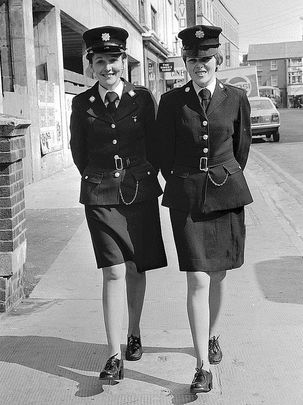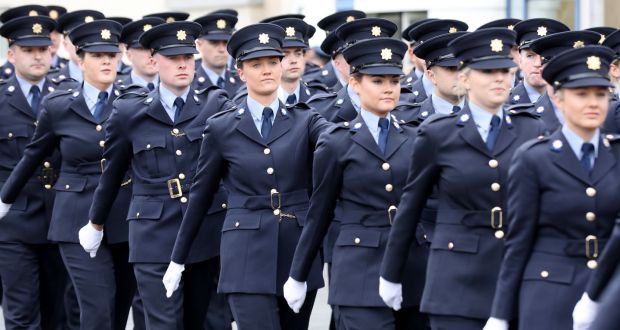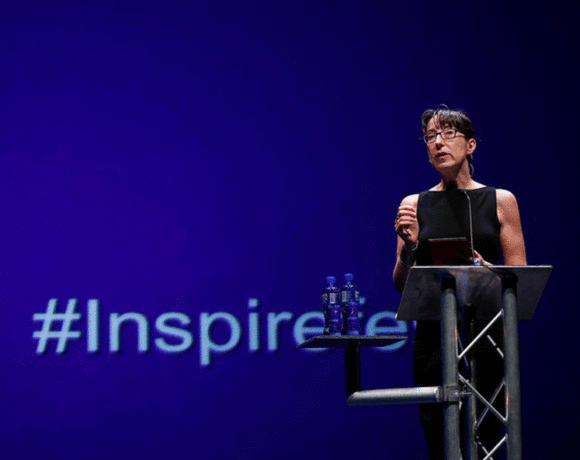In July 1959, An Garda Síochána welcomed twelve female members to its rankings. These women were the first female officers to ever join the organisation, and their bravery paved the way for generations of women who came after them. The Garda gathered at Farmleigh House this past Wednesday, 10th July 2019, to celebrate the 60th anniversary of this groundbreaking advancement.
The campaign for female recruitment to An Garda Síochána can be traced back to more than 40 years before the success of those twelve women. In 1917, the Dublin Metropolitan Police employed four women to patrol the streets between 7pm and midnight. Every morning, they presented a report to Commissioner Sir Walter Edgeworth-Johnstone about the ‘moral state of the streets.’ However, they were not actual members of the service. Commissioner Johnstone was pleased with their work and wanted to employ two more women, so he sent a request to the Treasury for it to be sanctioned in 1919. The female patrols kept their jobs when Ireland was established as a republic in 1922, but their roles were not filled after they retired. More women police assistants would not be appointed until 1955 and 1956.
The Joint Committee of Women’s Societies and Social Workers had been the major driving force behind the campaign for the appointment of female police to the Garda since 1936. The Joint Committee brought the issue to a national level in the 1950s. It garnered support from local authorities around Ireland and strategically utilised media coverage to attract mass attention to its campaign. It worked.

By November 1953, Garda Commissioner Daniel Costigan was convinced that Dublin needed women police and assumed other centres would as well. Minister for Justice Gerald Boland rejected his proposal, as did Minister Boland’s successor James Everett. Thomas Coyne and F.C. Connolly, two senior civil servants, would eventually give the proposal the traction it needed. Minister for Justice Oscar Traynor was authorised to begin the process for appointing women in 1957, and official approval was granted in 1958.
National newspapers made the announcement that An Garda Síochána was accepting female candidates that same year. Posters were also disseminated and posted outside every Garda station. 178 women had sent in applications by 31st October 1958, and 44 of them were called in for interviews between 14th and 17th April 1959. Of the 41 who attended, those historic twelve would be recruited. Sergeant Doreen Prissick of Liverpool City Police was chosen to instruct, supervise, and counsel the women for five months before they went into action. On 7th December 1959, the twelve recruits (‘Ban Gardaí) were assigned to Pearse Street Garda Station and also had duties at Store Street Garda Station.
Bríd Wymbs, one of the twelve, shared one of her early experiences on the beat with the Irish Times. She and a female colleague were patrolling O’Connell Street when they noticed cars and pedestrians stopping to look at them. “We didn’t know what was going on so we saw a guard standing at the Carlton cinema and we decided to ask him. He said to us, ‘will ye go away from me for God’s sake, it’s yourselves they are looking at,’” she said.
Female recruitment slowed during the following fifteen years, but the removal of the marriage ban in 1973 made it possible for women to combine family life with a career. The 1970s saw remarkable growth in the number of female gardaí. The 1975 recruiting class welcomed ten women, the 1978 class welcomed 46, and the 1983 class was the first to be all female.
Today, An Garda Síochána has 3,780 female police, or 27% of Garda members. In comparison to female representation in police services across the entirety of Europe, this figure is above average. The Garda reserve is 26% female, and women make up 76% of Garda staff. The organisation has seen marked changes throughout the past sixty years, and much of that progress goes back to those pioneering women.

Garda Commissioner Drew Harris recognised the organisation’s growth at the event on Wednesday: “We have come a long way since the first 12 women joined An Garda Síochána in July 1959. Female representation within the ranks of An Garda Síochána is strong. Women perform duty across the whole range of operational units and bureaus. Every day the women of An Garda Síochána make a positive difference to individuals and the communities this organisation serves across the country and further afield.”
However, Commissioner Harris also recognised that the Garda still has room to grow: “Not only do we need to encourage more women to join An Garda Síochána, we also need to continue to give female Gardaí the encouragement and support to apply for specialist units, detective duties and promotion so we can continue to increase female representation across An Garda Síochána.” To accomplish this goal, An Garda Síochána plans to establish a Women’s Network that will be chaired by Chief Superintendent Margaret Nugent.
The 60th anniversary event was attended by women who have served in An Garda Síochána over the last 60 years, including some of the twelve from the first female recruiting class. These women put the first cracks in the glass ceiling hanging over law enforcement, and they gave future generations of women the hammer they need to shatter it.













